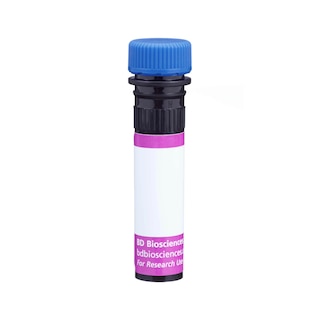-
Reagents
- Flow Cytometry Reagents
-
Western Blotting and Molecular Reagents
- Immunoassay Reagents
-
Single-Cell Multiomics Reagents
- BD® OMICS-Guard Sample Preservation Buffer
- BD® AbSeq Assay
- BD® OMICS-One Immune Profiler Protein Panel
- BD® Single-Cell Multiplexing Kit
- BD Rhapsody™ ATAC-Seq Assays
- BD Rhapsody™ Whole Transcriptome Analysis (WTA) Amplification Kit
- BD Rhapsody™ TCR/BCR Next Multiomic Assays
- BD Rhapsody™ Targeted mRNA Kits
- BD Rhapsody™ Accessory Kits
-
Functional Assays
-
Microscopy and Imaging Reagents
-
Cell Preparation and Separation Reagents
-
- BD® OMICS-Guard Sample Preservation Buffer
- BD® AbSeq Assay
- BD® OMICS-One Immune Profiler Protein Panel
- BD® Single-Cell Multiplexing Kit
- BD Rhapsody™ ATAC-Seq Assays
- BD Rhapsody™ Whole Transcriptome Analysis (WTA) Amplification Kit
- BD Rhapsody™ TCR/BCR Next Multiomic Assays
- BD Rhapsody™ Targeted mRNA Kits
- BD Rhapsody™ Accessory Kits
- United States (English)
-
Change country/language
Old Browser
This page has been recently translated and is available in French now.
Looks like you're visiting us from {countryName}.
Would you like to stay on the current country site or be switched to your country?




Flow cytometric analysis of CD117 expression on human TF-1 Cells. Cells from the human TF-1 (Human erythroleukemia, ATCC Cat. No. CRL-2003) cell line were stained with either BD Horizon™ BV421 Mouse Anti-Human CD117 antibody (Cat. No. 563856; solid line histogram) or BD Horizon™ BV421 Mouse IgG1, κ Isotype Control (Cat. No. 562438; dashed line histogram). The fluorescence histograms were derived from events with the forward and side light-scatter characteristics of viable cells. Flow cytometry was performed using a BD™ LSR II Flow Cytometry System.


BD Horizon™ BV421 Mouse Anti-Human CD117

Regulatory Status Legend
Any use of products other than the permitted use without the express written authorization of Becton, Dickinson and Company is strictly prohibited.
Preparation And Storage
Product Notices
- This reagent has been pre-diluted for use at the recommended Volume per Test. We typically use 1 × 10^6 cells in a 100-µl experimental sample (a test).
- An isotype control should be used at the same concentration as the antibody of interest.
- Caution: Sodium azide yields highly toxic hydrazoic acid under acidic conditions. Dilute azide compounds in running water before discarding to avoid accumulation of potentially explosive deposits in plumbing.
- Source of all serum proteins is from USDA inspected abattoirs located in the United States.
- Pacific Blue™ is a trademark of Molecular Probes, Inc., Eugene, OR.
- Brilliant Violet™ 421 is a trademark of Sirigen.
- For fluorochrome spectra and suitable instrument settings, please refer to our Multicolor Flow Cytometry web page at www.bdbiosciences.com/colors.
- Please refer to www.bdbiosciences.com/us/s/resources for technical protocols.
Companion Products


The 104D2 monoclonal antibody specifically binds to human CD117, the receptor for stem cell factor (SCF). It selectively recognizes NIH- 3T3 cells transfected with human c-kit, the gene that codes for SCF-R. The 104D2 antibody does not block the epitope that binds SCF. In the bone marrow of humans and mice, SCF is expressed primarily on hematopoietic progenitor cells. Lack of functional SCF or deficient SCF-R caused by mutations in the Sl and W loci, respectively, can result in severe anemia and a decrease in the number of primitive progenitor cells in mice. Human hematopoietic progenitor cells can be recognized by their surface expression of CD34. This cell population constitutes a small subset (1% to 5%) of bone marrow cells. CD34+ cells contain a small subpopulation of primitive/non-committed progenitors, with the remaining fraction being cells committed to the various hematopoietic lineages. SCF alone induces extensive proliferation of erythroid-committed progenitor cells (CD34lo CD71hi CD64-). On primitive (CD34hi CD38lo CD50+) and granulo-monocytic (CD34+ CD64+) progenitor cells, SCF synergistically enhances the effects of other cytokines, the strongest of which are on the primitive progenitor cells. In addition, SCF promotes survival of primitive progenitors in the absence of proliferation. The receptor is highly expressed at similar levels on all of the three mentioned CD34+ cell subsets, whereas B-lymphoid committed progenitor cells (CD34+ CD19+) express low levels of SCF-R. Among CD34- bone marrow cells, only a small number of cells (mostly erythroid) express the receptor.
The antibody was conjugated to BD Horizon™ BV421 which is part of the BD Horizon™ Brilliant Violet™ family of dyes. With an Ex Max of 407-nm and Em Max at 421-nm, BD Horizon™ BV421 can be excited by the violet laser and detected in the standard Pacific Blue™ filter set (eg, 450/50-nm filter). BD Horizon™ BV421 conjugates are very bright, often exhibiting a 10 fold improvement in brightness compared to Pacific Blue™ conjugates.

Development References (3)
-
Ashman LK, Buhring HJ, Aylett GW, Broudy VC, Muller C. Epitope mapping and functional studies with three monoclonal antibodies to the c-kit receptor tyrosine kinase, YB5.B8, 17F11, and SR-1. J Cell Physiol. 1994; 158(3):545-554. (Biology: Flow cytometry). View Reference
-
Ashman LK, Cambareri A, Nguyen L, Bühring H-J. CD117 workshop panel report. In: Kishimoto T. Tadamitsu Kishimoto .. et al., ed. Leucocyte typing VI : white cell differentiation antigens : proceedings of the sixth international workshop and conference held in Kobe, Japan, 10-14 November 1996. New York: Garland Pub.; 1997:816-818.
-
Rappold I, Ziegler BL, Kohler I, et al. Functional and phenotypic characterization of cord blood and bone marrow subsets expressing FLT3 (CD135) receptor tyrosine kinase. Blood. 1997; 90(1):111-125. (Immunogen). View Reference
Please refer to Support Documents for Quality Certificates
Global - Refer to manufacturer's instructions for use and related User Manuals and Technical data sheets before using this products as described
Comparisons, where applicable, are made against older BD Technology, manual methods or are general performance claims. Comparisons are not made against non-BD technologies, unless otherwise noted.
For Research Use Only. Not for use in diagnostic or therapeutic procedures.